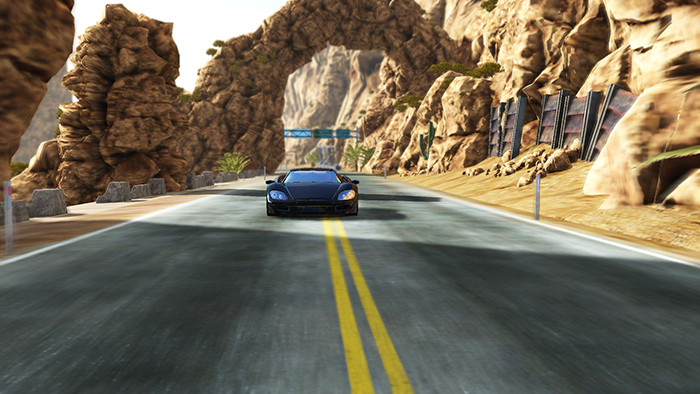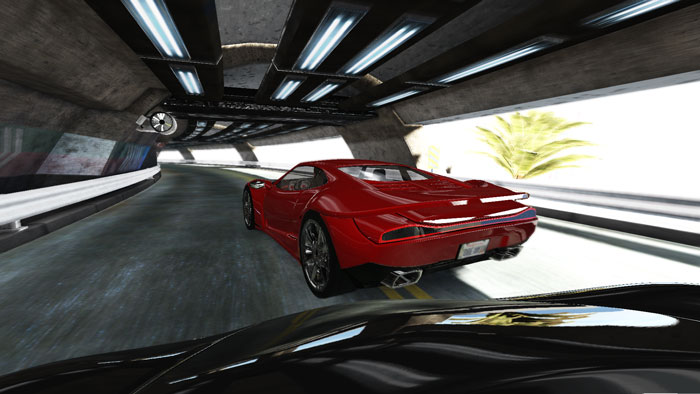GFXBench 4.0 introduces Car Chase to test Android devices with high-end graphics featuresNovember 05, 2015 Bringing the popular GFXBench benchmarking suite to desktop OpenGL and OpenGL ES 3.1 plus Android Extension Pack, GFXBench 4.0 enables measuring mobile and desktop performance with advanced graphics effects and increased workloads.
Car Chase is the first benchmark to test devices with game-like content utilizing Android Extension Pack features such as hardware tessellation.

Utilizing latest API features: hardware tessellation, geometry and compute shaders, ASTC textures The main addition to the test suite is Car Chase, a new high-level test scene makes which makes use of latest OpenGL ES 3.1 plus Android Extension Pack features. Two kinds of tessellation techniques are used to provide realistic graphics content: to improve the details of the background rock mountain environment up-close, the scene features hardware-based tessellation with displacement maps. The smooth surface of the car is provided by Bézier-curves and adaptive tessellation that enables further refinement based on the camera view. The scene uses geometry and compute shaders for HDR tone mapping and bloom, and also for post-process effects such as lens flares and particles. A highly scalable, compute shader-based motion blur algorithm is responsible for plausible camera and object movements. Texture compression is enhanced by the recent possibility to use ASTC, instead of ETC2. The graphics pipeline is based on deferred rendering combining physically-based materials and image-based specular reflections. The scene has dynamic lighting with cascaded shadows for a more realistic sense of depth. Additional post effects include depth-of-field, and screen-space ambient occlusion - which further enhances the details provided by tessellation.  Sustained performance measurement GFXBench 4.0 continues the tradition of including sustained performance test, iterating for 30 test runs to stress test the hardware and look at how performance changes over test runs. “Providing ways to measure how the hardware performs during prolonged periods of time is a vital part of our mission”, says Ferenc Pinter, Development Lead of Kishonti. Besides the new additions including Car Chase and a new low-level tessellation test, GFXBench 4.0 carries over all tests from previous versions for comparison and supports on-screen and off-screen test modes. Including Manhattan tests for OpenGL ES 3.0 and 3.1, GFXBench 4.0 is a comprehensive GPU benchmark measuring device performance with all the latest high-end graphics features. The benchmark automatically detects the device's capabilities and selects the most appropriate test set to provide accurate information. List of tests: Cross-platform and cross-API benchmarking GFXBench 4.0 is the first graphics benchmark designed to close the gap between desktop and mobile graphics by measuring the performance of desktop OpenGL and OpenGL ES 3.1 plus Android Extension Pack implementations. In order to provide cross-API comparability, DX12, Metal and Vulkan support is planned, too. Availability The community version of GFXBench 4.0 is now available for download on Google Play and for Windows 7, 8, 10 desktop . The corporate version is available for licensing through our GFXBench GL Benchmark Development Program. We also provide media editions for the technology press. About Kishonti Ltd. Kishonti Ltd. is a leading specialist in high-performance graphics and compute solutions. In the past decade we have been working together with leaders of the semiconductor and consumer electronics market listed among top ranking technology companies of the NASDAQ-100. Contacts
|



